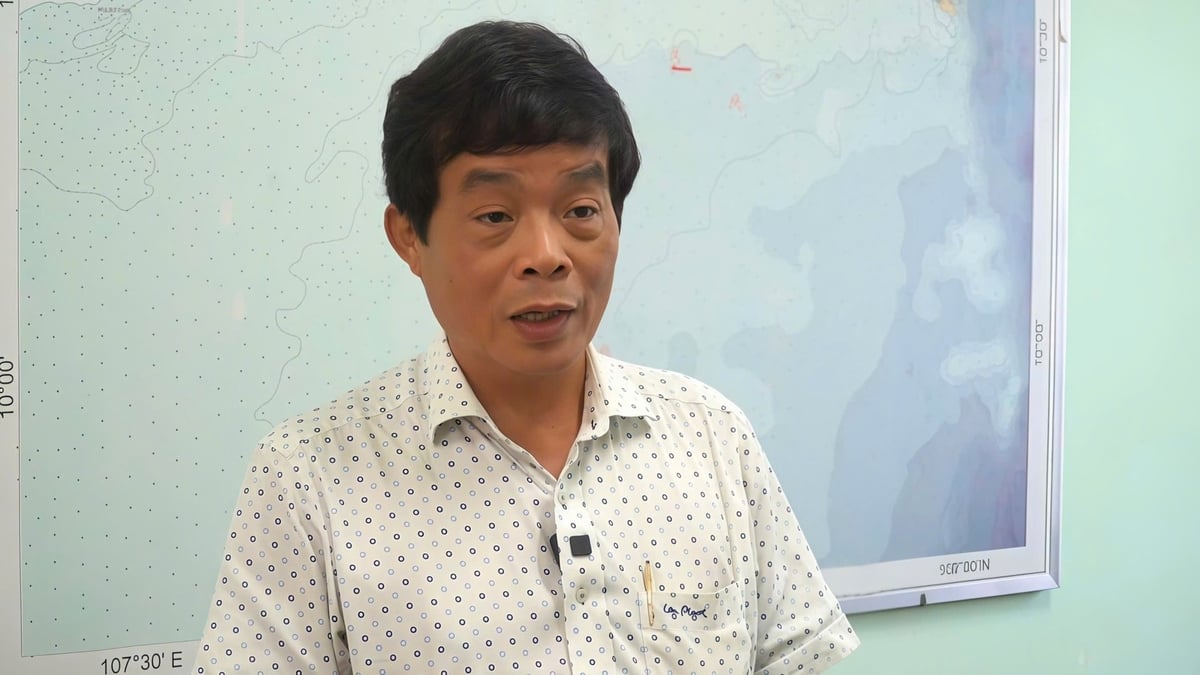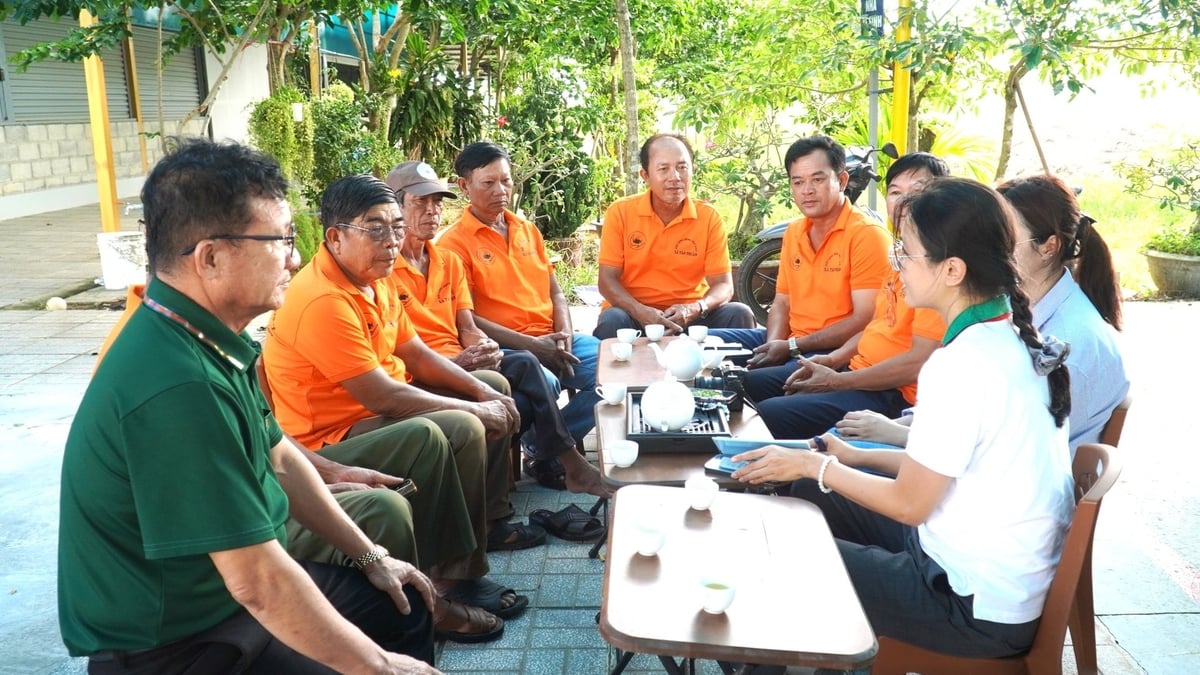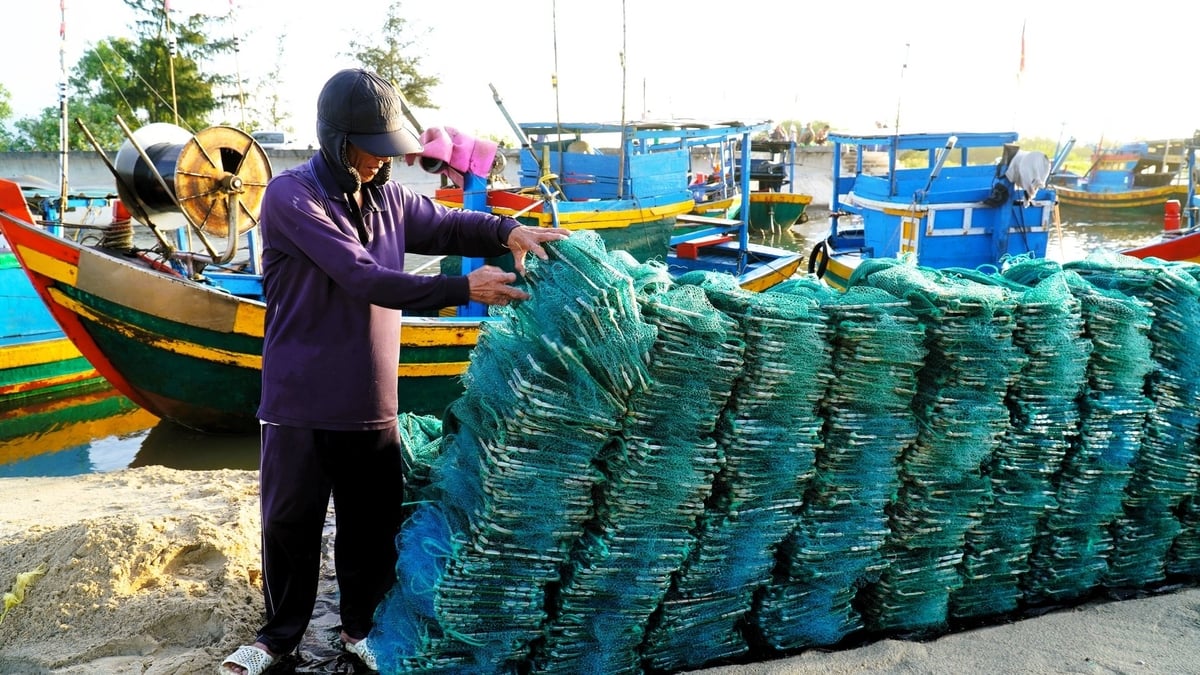December 7, 2025 | 20:40 GMT +7
December 7, 2025 | 20:40 GMT +7
Hotline: 0913.378.918
December 7, 2025 | 20:40 GMT +7
Hotline: 0913.378.918
To many, Huynh Quang Huy - Deputy Director of the Sub-Department of Fisheries and Islands (Department of Agriculture and Environment of Lam Dong province) and former President of the Binh Thuan Fisheries Association – is considered one of Vietnam’s leading experts in fisheries co-management.
In the context of public sector reforms, one of the government's guiding principles has been to be “close to the people, with the people.” Yet more than a decade ago, Mr. Huy went a step further: He chose to work alongside the people, linking economic development with environmental protection. He understood that true strength lies in the trust of fishers - the voluntary guardians of the sea, who are willing to monitor, detect, and report violations to the authorities.
“Community management” was the first English phrase Mr. Huy learned when reading about the United Nations Millennium Development Goals.
“It was inspiring! They called this the century of co-management,” he recalled. “We used to rely solely on the state apparatus, even though it was already overloaded. With such vast seas, no number of patrol stations could cover everything. What we truly need is a collective effort.”

Mr. Huynh Quang Huy – a pioneer in putting the philosophy of “co-management in fisheries” into practice, contributing to a shift in marine resource management mindset at the grassroots level. Photo: Tran Phi.
Over his 40-year journey in the fisheries sector, Mr. Huy vividly recalls the days when local fishers, despite their relentless efforts at sea - often to the point of exhaustion and despair - saw no way out of poverty due to the depletion of marine resources. Today, however, the community-led marine protection movement in Tan Thanh commune, Ham Thuan Nam district, has been recognized by both the Vietnamese Government and international partners as a pioneering approach to sustainable development.
It can be said that behind the achievements of coastal community groups in the South Central region lies the quiet yet enduring imprint of Mr. Huy. A man of modest stature, he has served as a vital bridge between the State and the people - a dedicated public servant whose name and deep commitment continue to be spoken of with respect, even as he prepares to retire.
In the early 2010s, rampant destructive trawling flattened entire marine ecosystems, wiping out fish eggs, small organisms, seaweed, and even the seabed's biological layers. During field surveys, Mr. Huy was shocked to discover that in a 100-square-meter area impacted by industrial-scale fishing, no marine creature remained.
Confronted with these alarming challenges, Mr. Huy and his fellow fisheries managers made a bold decision: to share the responsibility of managing marine resources with local communities.
Binh Thuan began piloting the co-management model as early as 2013. At first, it was merely a set of experimental ideas. It wasn’t until 2017 that the first successful fishing season signaled the model's potential. By 2019, co-management had proven its effectiveness and become a replicable approach.

Members of the Bien Vang (Golden Sea) Fishermen’s House in Tan Thanh commune meet with technical staff to discuss patrol plans and the protection of marine resources under the co-management model. Photo: Tran Phi.
Since 2019, local communities have maintained stable operations even without continued financial support from the project. This resilience is the result of a long journey that began with recognizing the pivotal role of communities in fisheries management.
Mr. Huy explained: “If we work for the benefit of the people, then first, they must clearly understand what that benefit is. They are the ones directly implementing the solutions, so it’s essential that they realize how destructive practices like overfishing are depleting the very resources their children and grandchildren will one day rely on to survive.”
Later on, some fishers shared their motivation in the simplest of terms: “Why did I join the community? So that my grandchildren will still know what a crab or a snail looks like.”
What matters most is that once communities truly see their role in protecting the sea, they don’t need anyone to remind them. According to Mr. Huy, they begin to monitor one another, uphold their local agreements, and speak out when violations occur, taking ownership of their shared marine space.
Mr. Huy emphasized that once a community-based organization is officially recognized, the individuals directly involved, especially members of the management board and association, must be supported through capacity-building efforts.
“This knowledge goes beyond technical expertise; it also includes skills in organizing, managing, and operating community activities - areas in which many local people still lack experience,” he explained. “Traditional fisheries in Vietnam have long relied on knowledge passed down through generations, and many fishers have limited formal education.”
According to Mr. Huy, sustained investment is another crucial long-term factor. Implementing co-management effectively requires not only community engagement but also integrated technical solutions and proper tools for restoring and protecting marine resources in a systematic and scientifically sound manner.

Fishers prepare artificial reef clusters before deploying them at sea - part of ongoing efforts in ecological restoration and sustainable livelihood development under the co-management model. Photo: Tran Phi.
Between 2019 and 2020, the Binh Thuan Fisheries Surveillance Sub-Department (now the Sub-Department of Fisheries and Islands under the Lam Dong Department of Agriculture and Environment) implemented a model of deploying artificial reef clusters to the seabed. However, without government support, local fishers can hardly afford to invest independently, as artificial reef clusters are costly and the return on benefits takes a long time.
According to Mr. Huy, the co-management model has strong potential for success with proper investment, enhanced community capacity, and strengthened awareness from the grassroots to the management level.
He concluded that co-management is not an easy model to implement. Yet once it takes root in people’s awareness and daily practices, it becomes an inseparable part of coastal community life. It is not merely a technical solution or policy; it represents a shift in how people live and interact with nature.
The 2017 Fisheries Law defines co-management as “a management approach in which the State shares authority and responsibility with community-based organizations in the management and protection of aquatic resources.”
Translated by Phuong Linh

(VAN) After three years, Project FST/2020/123 collected approximately 3,000 insect specimens, classified them into about 50 morphological groups, and identified around 40 species, including several new species.
/2025/12/01/0509-2-175427_206.jpg)
(VAN) Emission-reducing coffee areas in Lam Dong have entered the new crop with stable yields, improved quality, and a remarkably enhanced cultivation environment.

(VAN) The Institute of Agricultural Sciences for Southern Vietnam (IAS) marked its 100th anniversary in Ho Chi Minh City, celebrating a century of growth as a leading institute contributing significantly to Viet Nam’s agricultural development.

(VAN) An increasing number of livestock farms are using biogas generators to create a source of renewable electricity, helping to save costs and mitigate environmental pollution.

(VAN) Small changes in rice cultivation, from irrigation methods and straw collection to input management, are paving a new way for Vietnam's agriculture in the journey toward emission reduction.

(VAN) With the project of converting biogas into renewable electricity, Australia is both helping pig farms reduce their energy costs by up to 25% and contributing to environmental protection.
![Hue aims for Net Zero: [1] Initial steps from green transportation](https://t.ex-cdn.com/nongnghiepmoitruong.vn/608w/files/huytd/2025/11/28/0853-anh-6-giao-thong-xanh-hue-094717_940-153724.jpg)
(VAN) For sustainable development, Hue City is implementing many solutions to promote green transportation, which is an important initial step on the journey to building a Net Zero Hue.